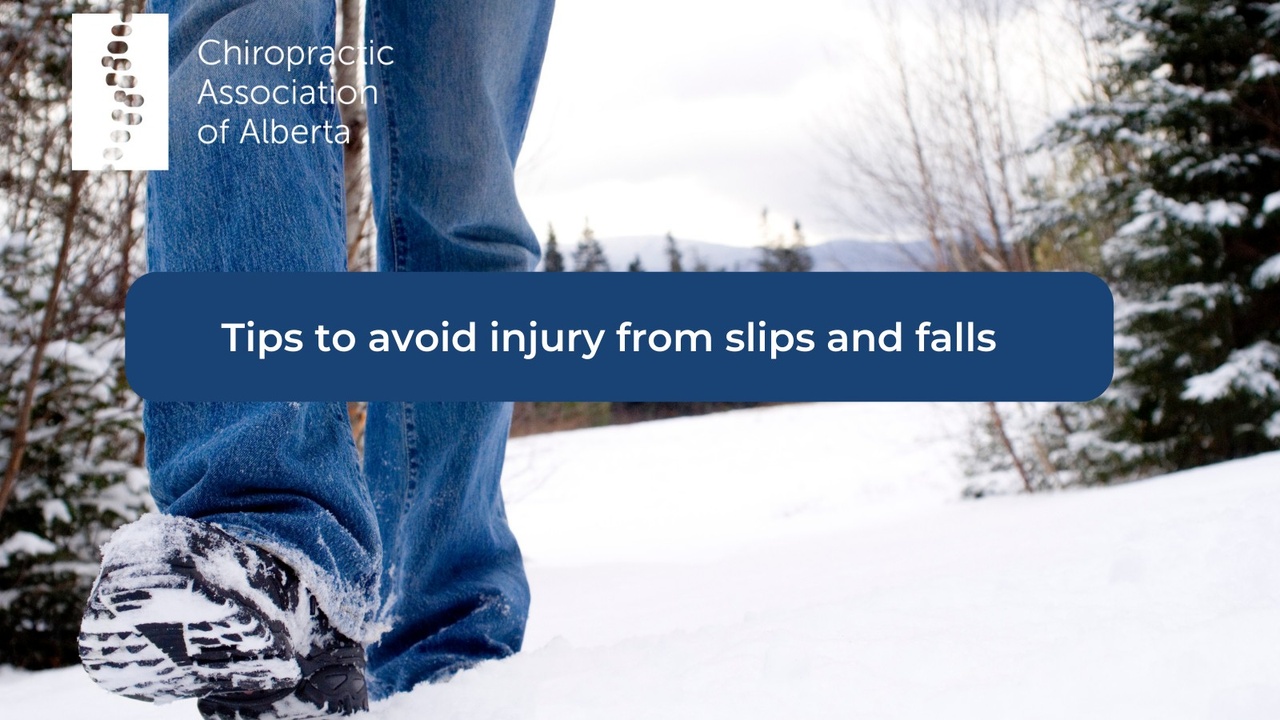
What you need to know about falls and treating injuries from falls
In Alberta, falls are the leading cause of injuries among seniors. Falls account for 101 emergency visits and 27 fall-related hospital admissions each day.[i] With an average length of stay in hospital of 22 days, hospital admissions and emergency department visits due to seniors’ falls costs the healthcare system $290 million annually.[ii]
Twenty to 30 per cent of seniors in Alberta will fall once a year.[iii] In fact, 95 per cent of all hip fractures and 40 per cent of all nursing home admissions are a direct result of falling.[iv] And seniors older than 65 are nine times more likely than those younger than 65 to be admitted to hospital for fall-related concussions[v] (the most common type of traumatic brain injuries).
Slips and falls most often result in back and muscle pain. Chiropractors are highly educated and specially trained to diagnose, treat and prevent conditions related to the spine, nervous system, and musculoskeletal system. They work with patients to resolve pain, discomfort and restricted range of motion that can result from injury. If you are experiencing pain related to a slip or fall, consult your chiropractor. Find a chiropractor near you.
If you have you experienced a fall, or have a fear of falling, take these steps to maintain your independence and avoid being injured from a slip or fall:
- MEDICATION USE IS ONE OF MANY RISK FACTORS FOR FALLS IN OLDER ADULTS. The more medications you are on, the higher your risk of falling.iv Talk to your doctor or pharmacist about your medications, symptoms, and potential to experience falls. They can assess you and your medications and determine the best plan of action.
- PRACTICE INJURY PREVENTION. For older adults, fall prevention means injury prevention. Ask your loved ones to help you ensure that your rooms and stairways are clutter-free and well-equipped with lighting, handrails, grab bars, and nonslip mats — all of which can go a long way toward keeping you safe in your home.
- HAVE YOUR VISION CHECKED. Your vision changes with age, and these changes may increase your risk of falling. Visit your optometrist or ophthalmologist for a comprehensive eye exam every year.
- WEAR PROPER FOOTWEAR. Shoes and boots with solid treads on the soles can help to minimize the risk of slips and falls. Click here for information on the ideal shoe for seniors’ fall prevention.
- KEEP MOVING. Physical activity can go a long way toward fall prevention. Consider taking the stairs instead of the elevator, parking further away when running errands, or walking around the house while your coffee brews. Start by exercising in three-minute bursts and work up to taking a 30-minute walk around your neighbourhood.
Falls can be prevented. For more information and resources, visit www.findingbalancealberta.ca
[i] Aggregate data from Alberta Health, 2021. Retrieved from the Injury Prevention Centre.
[ii] Alberta Health, Analytics and Performance Reporting Branch, 2021. Retrieved from the Injury Prevention Centre.
[iii] Public Health Agency of Canada Seniors’ Falls in Canada: Second Report, Ottawa. Public Health Agency of Canada, 2014. Retrieved from the Injury Prevention Centre.
[iv] Fall Risk & Medications, Injury Prevention Centre www.findingbalcancealberta.ca
[v] 2018 Injury Prevention Centre. Data received from Alberta Health, May 2019

